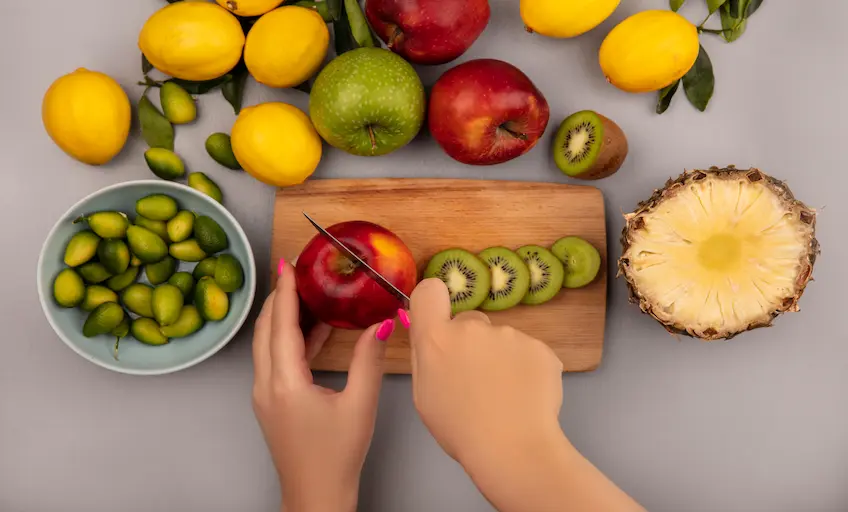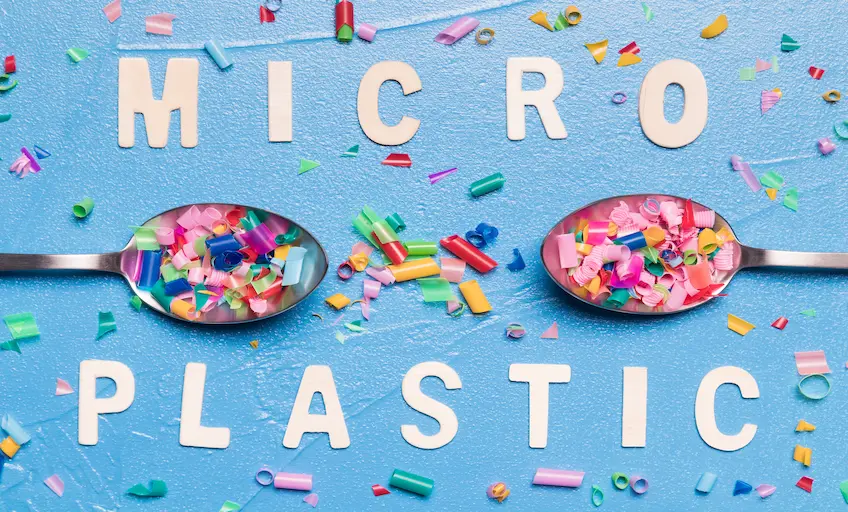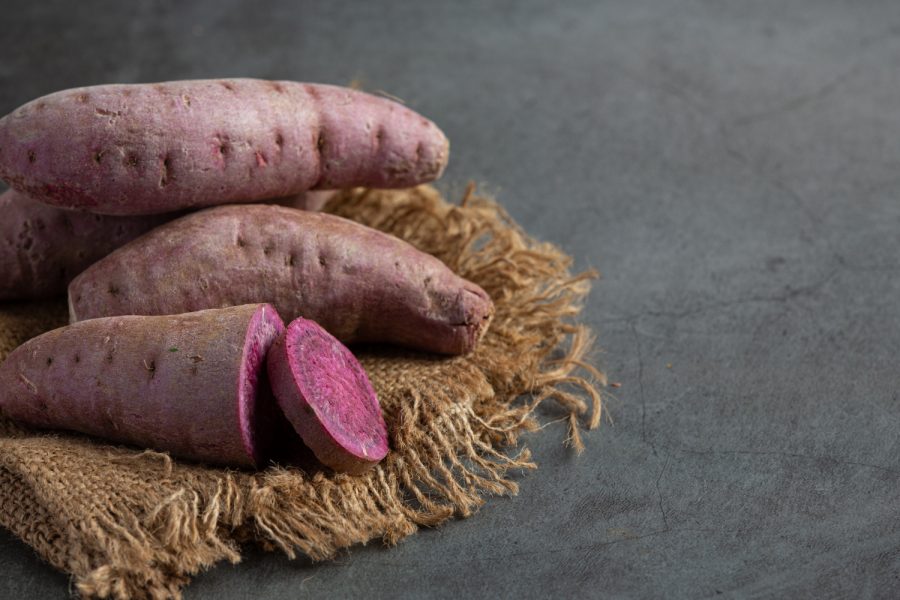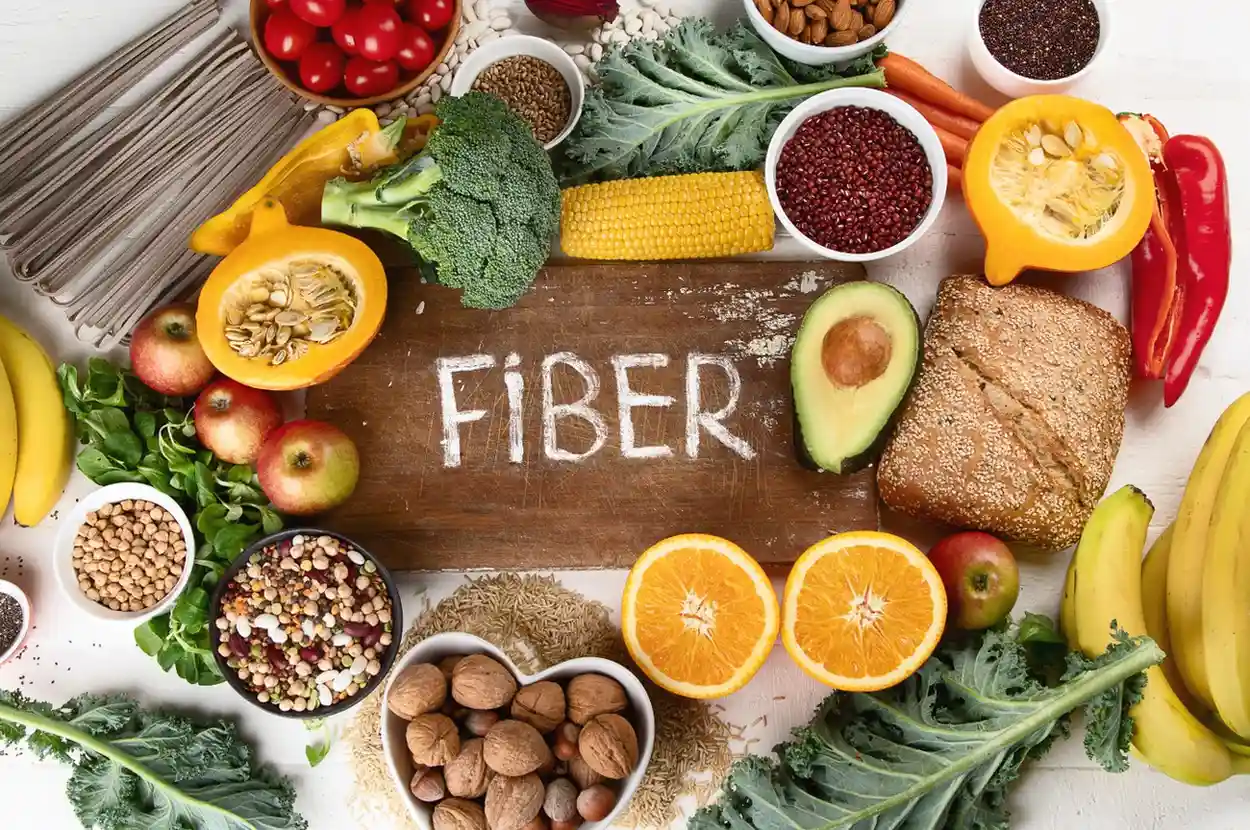Tired of sugar spikes but still craving something sweet? Low glycemic fruits are your delicious go-to savories! Packed with nutrients, fiber, and natural sweetness, these fruits satisfy cravings without sabotaging your blood sugar.
What is the glycemic index?
The glycemic index (GI) is a tool scientists have proposed to help you understand how different foods affect your blood sugar levels. Your doctor might suggest incorporating this tool into your overall strategy for healthy eating.
The GI compares the speed at which various carbohydrate-containing foods are likely to affect your blood sugar level. It provides broad categories to guide your food choices.
GI values can be:
- Low: 55 or below
- Moderate: 56 to 69
- High: 70 and above
The lower the GI score, the slower the rise in blood sugar, making it easier for the body to manage post-meal changes.
List of low-glycemic fruits
Most whole fruits have a low to moderate GI. Many also provide essential nutrients, including vitamins A, C, antioxidants, and fiber.
Cherries
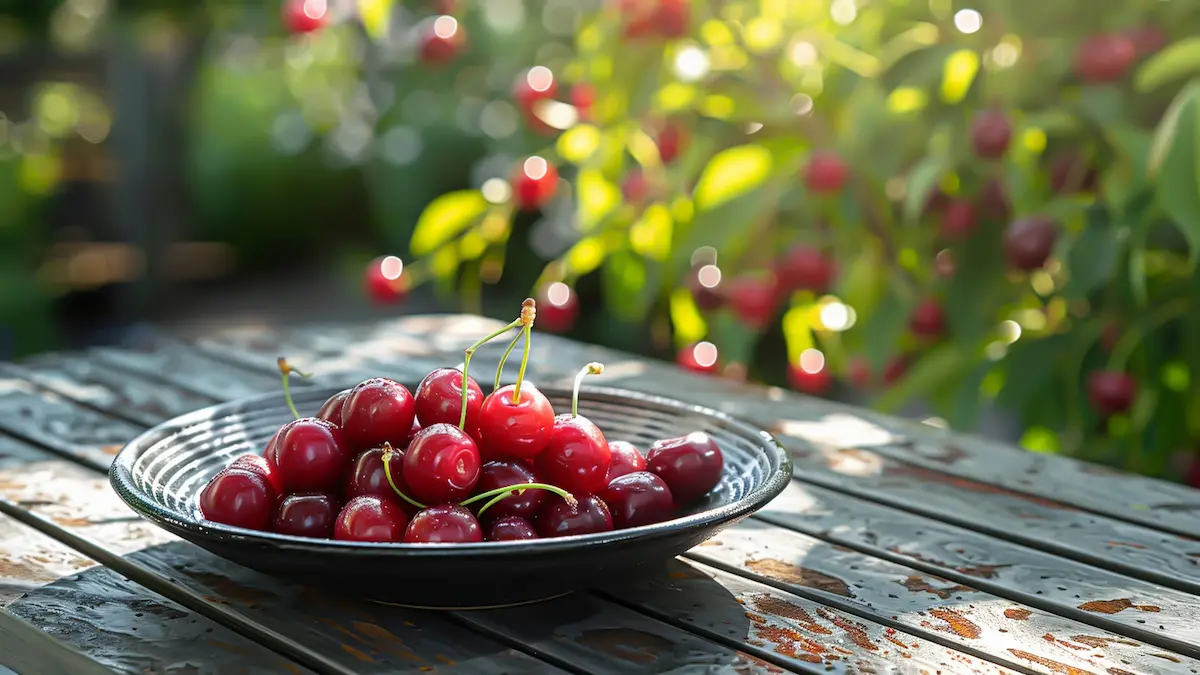
Cherries are rich in potassium and antioxidants, which help support your immune system.
One cup of cherries provides:
- Carbohydrates: 22.1 g
- Calories: 86.9
- Fiber: 2.9 g
- Vitamins B, C, and K.
Grapefruit
Grapefruit is a low-GI fruit and a superb source of vitamin C.
Half a grapefruit also provides:
- Carbohydrates: 10.7 g
- Calories: 43.7
- Calcium, folate, and vitamin A
Apricots
Apricots provide a good source of potassium, phosphorus, and other minerals.
One 35 g apricot provides:
- Carbohydrates: 3.9 g
- Calories: 16.8
- Fiber 0.7 g
- Calcium and copper
- Vitamins C, A, E, and some B vitamins
Pears
Enjoy the rich, subtle sweetness of fresh or lightly baked pears. With their skins on, they are high in fiber and have a low glycemic index.
One medium pear provides:
- Carbohydrates: 27.1 g
- Fiber: 5.52 g
- Calories: 101
- Potassium, magnesium, and phosphorus
- Vitamins C, K, and some B vitamins
Apples
Apples satiate your need for crunch and a sweet treat. They have a low GI and are a good source of fiber. They may also contribute to healthy gut bacteria, among other health benefits.
One medium apple will typically provide:
- Carbohydrates: 25.1 g
- Fiber: 4.8 g
- Calories: 94.6
- Potassium, vitamin C, some B vitamins, and a range of antioxidants
Oranges
Oranges can enhance your vitamin C intake and have a low glycemic index (GI) value. A whole orange is less likely to raise your blood sugar levels when compared to orange juice and is typically more filling.
A typical orange weighing 154 grams will provide:
- Carbohydrates: 18.2 g
- Fiber: 3.4 g
- Calories: 77
- Vitamin C: 87 milligrams (mg)
- Calcium, magnesium, phosphorus, potassium
- Vitamin A and a range of antioxidants
Plums
Plums can be found as fresh fruit or dried.
A fresh plum weighing 66 g will provide:
- Carbohydrates: 7.5 g
- Fiber: 0.9 g
- Calories: 30.4
- Potassium, magnesium
- Vitamin C, A, and some B vitamins
Strawberries
Berries, such as strawberries, typically have a low GI value. Strawberries also offer vitamin C, fiber, and antioxidants.
A half-cup of strawberries weighing 75 g offers:
- Carbohydrates: 11.4 g
- Fiber: 2.7 g
- Calories: 52.5
- Vitamin C: 84 mg
- A variety of antioxidants, including choline, beta carotene, and lutein + zeaxanthin
Peaches
Peaches are delicious on their own, in smoothies, or combined with other fruits like blueberries or mangoes.
One peach weighing 150 g provides:
- Carbohydrates: 15.2 g
- Fiber: 2.3 g
- Calories: 69
- Vitamins K, A, and C
- Antioxidants, including choline, beta carotene, and lutein + zeaxanthin
Grapes
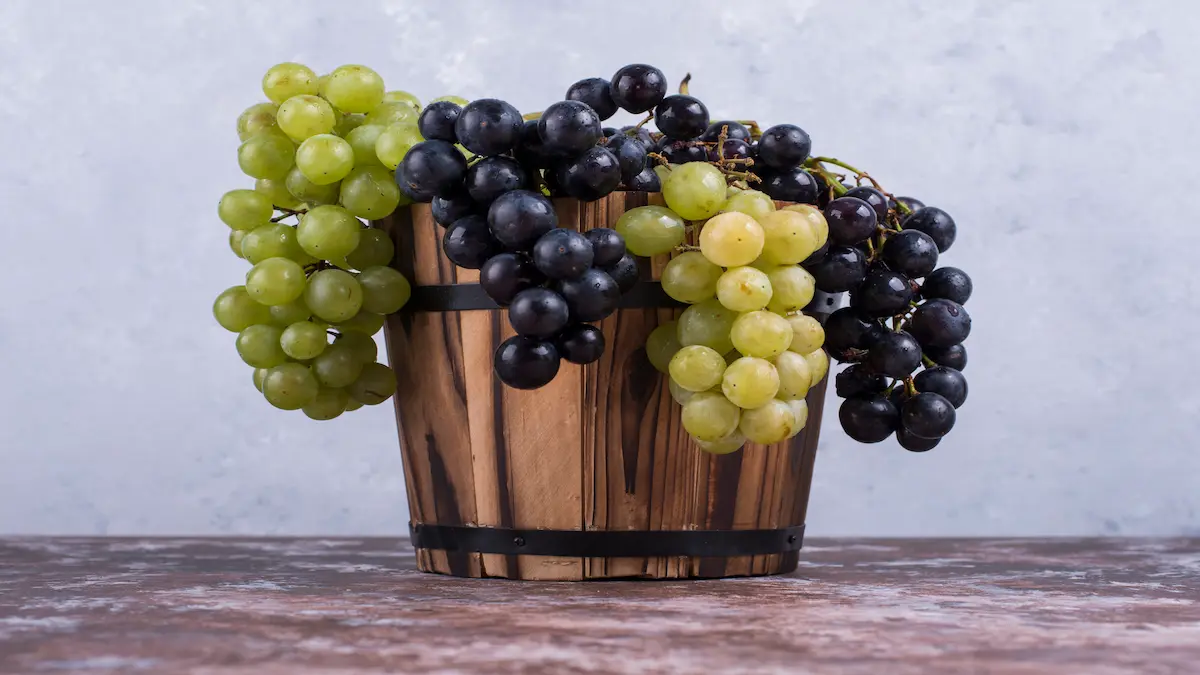
Grapes have a low glycemic index and are rich in various antioxidants, including proanthocyanidins, anthocyanins, flavonols, and phenolic acids. These nutrients help manage inflammation, support gut bacteria, and reduce the risk of heart disease.
A half-cup of grapes weighing 75 g provides:
- Carbohydrate: 13.6 g
- Fiber: 0.7 g
- Calories: 51.8
- Calcium, potassium, magnesium
Raspberries
Raspberries have a low glycemic index (approximately 25-26), thereby an excellent option for managing blood sugar levels.
They are regarded as a low-sugar fruit, containing about 5 grams of sugar per cup, and they also have a high fiber content, which helps manage blood sugar levels.
Here’s the nutrient profile of raspberries (per 1 cup / 123 g):
- Calories: 64
- Carbohydrates: 14.7 g
- Sugars: 5.4 g
- Fiber: 8 g
- Protein: 1.5 g
- Fat: 0.8 g
- Vitamins B, C, K, E
- Potassium, calcium, and zinc
Pomegranates
Pomegranate is regarded as a low glycemic index (GI) fruit, with a GI score ranging from 18 to 53. Individuals with diabetes can safely consume it in moderation.
Here’s its nutrient profile (1 cup / 174 g):
- Calories: 144
- Carbohydrates: 32.5 g
- Sugars: 23.8 g
- Fiber: 7 g
- Protein: 2.9 g
- Fat: 2 g
- Vitamins C, K, E
- Iron, potassium, and magnesium
Blueberries
Blueberries have a low glycemic index of 53, making them a good choice for diabetics.
Here’s the nutrient profile of blueberries (1 Cup / 148g):
- Calories: 84
- Carbohydrates: 21 g
- Sugars: 14.7 g
- Fiber: 3.6 g
- Protein: 1.1 g
- Fat: 0.5 g
- Vitamins A, B, C, E, K
- Manganese and potassium
Tips to add more low-glycemic fruits
Here are some practical and easy tips to incorporate more low-glycemic fruits into your diet:
- Snack smart: Keep low-GI fruits, such as berries, cherries, or apples, pre-washed and ready to grab. They’re perfect for mid-morning or evening snacks.
- Top your breakfast: Add chopped kiwi, raspberries, or blueberries to your oatmeal, muesli, or Greek yogurt for a fiber-rich, low-GI start.
- Build a better smoothie: Use fruits like avocado, berries, or peach as the base instead of high-GI options like bananas. Blend with protein or nut butter for added balance.
- Swap your dessert: Craving sweets? Try a fruit salad with berries, a dash of cinnamon, or a baked apple with a sprinkle of nuts.
- Upgrade your salads: Toss in pomegranate seeds, orange slices, or pears to fresh salads—adding sweetness and crunch without the sugar spike.
- Go frozen: Stock up on frozen low-GI fruits (like blueberries or cherries) to add to smoothies, pancakes, or oatmeal throughout the year.
- Pair with protein or fat: Combine fruit with a handful of nuts, nut butter, or cottage cheese to slow glucose absorption and enhance fullness.
- Use as a natural sweetener: Mash berries or use apple purée instead of sugar in baking, sauces, or dressings.
- Portion mindfully: Stick to a ½ cup to 1 cup serving to maintain a low glycemic load, even for healthy fruits.
- Rotate and explore: Try a variety of low-GI fruits like apples, oranges, grapes, pears, cherries, and strawberries.
Enjoy low-glycemic fruits
Low glycemic fruits are nature’s way of satisfying your sweet tooth, without the sugar spikes. Packed with fiber, antioxidants, and essential nutrients, they support steady energy, better blood sugar control, and long-term health. Whether you blend them, snack on them, or toss them into meals, these fruits make healthy eating feel effortless and delicious. So add more color to your plate, one smart bite at a time!
FAQs about fruits with low GI
- Is the GI value the best way to decide which fruits to eat?
GI values provide a general guide to help you choose foods and can be beneficial as part of a broader dietary plan if you have diabetes. Creating a plan with a healthcare professional, maintaining a healthy diet, engaging in regular exercise, and monitoring your blood sugar with a glucometer are all vital components of managing diabetes.
- What are the best low-glycemic fruits for diabetics?
Most fruits have a low GI, with values below 55. Apples, oranges, and pears are examples of fruits that fall below 55 on the index. Dried fruits, including sweetened cranberries, have medium GI values.
- Can I eat low-glycemic fruits every day?
Yes, absolutely—you can safely enjoy low glycemic index (GI) fruits daily when eaten in the right portions and paired wisely. Top low-GI fruits for diabetics include berries (blueberries, raspberries, strawberries), apples, pears, and cherries.
- How do low glycemic fruits help with insulin resistance?
Low glycemic fruits release sugar slowly, helping stabilize blood glucose and improve insulin sensitivity. Their fiber content slows absorption and supports gut health, both key to reducing insulin resistance. Antioxidants in fruits like berries and pomegranates fight inflammation and protect insulin function. They also promote fullness and healthy weight, two significant factors in managing insulin resistance naturally.
- Are low glycemic fruits suitable for weight loss?
Yes, low-glycemic fruits are great for weight loss! They’re low in calories, high in fiber, and keep you full longer, curbing cravings and reducing overall calorie intake. Their slow sugar release helps prevent insulin spikes, important for fat-burning and appetite control. They’re nutrient-rich and naturally sweet, making them a smart, satisfying alternative to processed snacks.
Key Takeaways
- The Glycemic Index (GI) is a ranking of foods based on how quickly they raise blood sugar levels.
- Some fruits with a low GI include grapes, oranges, cherries, peaches, pomegranates, and strawberries.
- Snack smartly, portion mindfully, and rotate and explore low-GI fruits.
Stay tuned to the Activ Living Community. Keep up to date with the latest health tips and trends through expert videos, podcasts, articles, and much more on nutrition, fitness, mindfulness, and lifestyle conditions like Asthma, Blood Pressure, Cholesterol, and Diabetes. Activ Living ke saath sahi sehat ki shuruat ABHI karo.
You may also be interested in the following blogs:
- Diet and Diabetes: Foods to Avoid for Better Blood Sugar Control
- How To Navigate The Indian Fried Foods And Diabetes Epidemic
Popular Searches
How to lower blood pressure | Fruits good for liver | Unhealthy foods | Ragi Benefits | Basal Metabolic Rate | Acupressure points for High Blood Pressure | Ayurvedic medicine for blood pressure | How to control cholesterol at home | Homeopathy for Asthma | Biological Age | Home remedies for TB | Natural beta blockers | Negative effects of internet | Types of walking | Blood pressure calculator | Blood sugar calculator | BMI Calculator





 1800-270-7000
1800-270-7000

